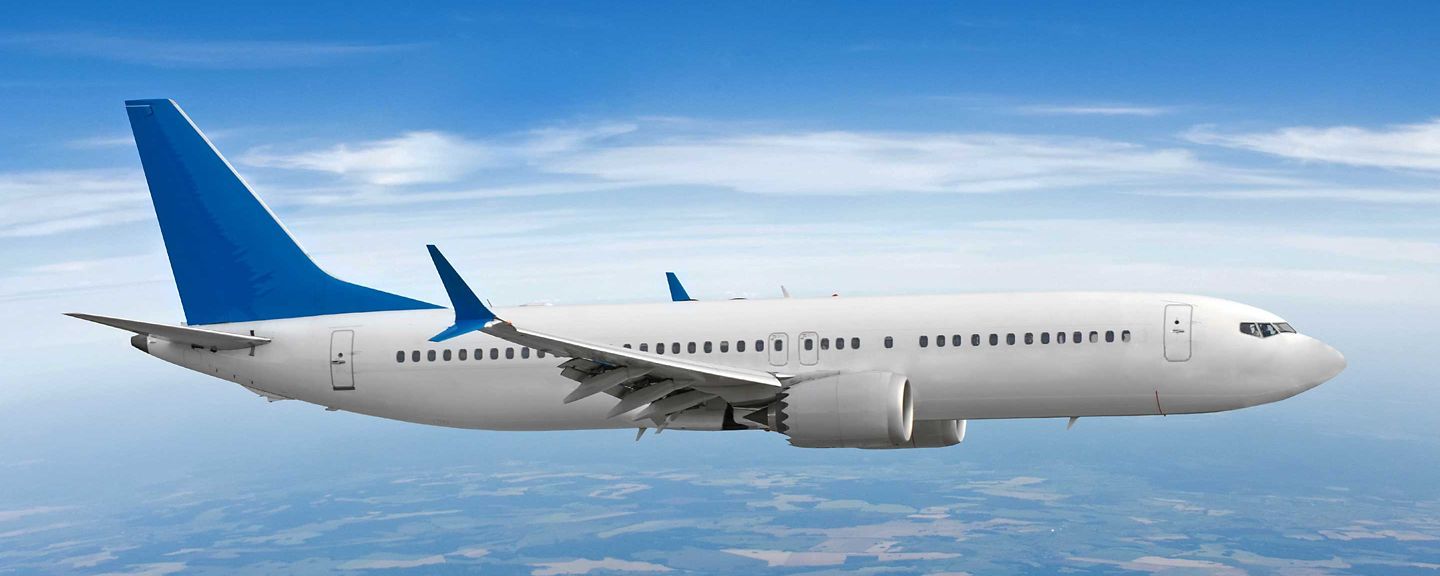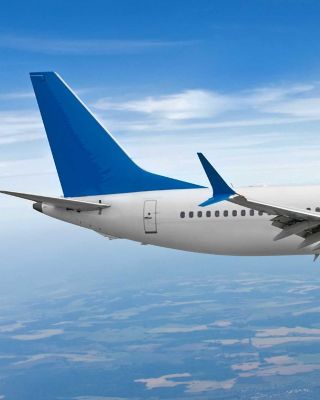Your browser is not supported.
For the best experience, please access this site using the latest version of the following browsers:
By closing this window you acknowledge that your experience on this website may be degraded.
Honeywell provides many key products and systems for the Boeing 737MAX which may need updates or maintenance before an aircraft is returned to service. As always, you may contact your assigned field service engineer (FSE) directly, and we are committed to treating every entry-into-service need for the Boeing 737MAX in an urgent manner while staying in alignment with Boeing.
CONTACT US
Honeywell Aerospace Technical Support is available 24/7 worldwide
To expedite service for Boeing 737MAX customers, we have updated our phone tree with 737MAX prompts to ensure your call is routed correctly.
1-855-808-6500 (Toll-Free in US and Canada)
1-602-365-6500 (International)
Option 5: 737MAX
Option 1: avionics
Option 2: mechanical
Contact Tech Support here
Honeywell Customer Support for Parts is also available 24/7 globally:
1-800-601-3099
Option 6: 737MAX
Electronic Bleed Air Systems (EBAS) Valve Bearings
If 737MAX airplanes are not stored/operated according to the current Boeing Aircraft Maintenance Manual (AMM) procedures, the EBAS valves may be susceptible to corrosion. These EBAS valves include the Pressure Regulating Shut Off Valve (part number 63216064-3) and the High Pressure Shut Off Valve (part number 63292068-2). Condensed water can get trapped inside the bearings and the bearing material could corrode within a few days. Condensation occurs naturally in hot and humid environments (for example, 75 to 100 degrees Fahrenheit at 90% humidity). Condensation can also occur as a result of pack runs with auxiliary power unit (APU) bleed air heat (about 350 degrees Fahrenheit) and humid APU bleed air leaking through the Pressure Regulating Shutoff Valve (a few pounds per minute).
Return suspect valves to Honeywell for repair; units will be covered under warranty.
- Installing blanking plates: perform a wrench check to locate suspect valves.
- Performing ferry flights: remove suspect valves found during a wrench check or health check.
- Moving airplanes to a more benign environment: perform a wrench check and remove a valve if it is found to be seized or “sticky.”
- When corrosion is found in the same environment as the original corrosion, work with Honeywell on a plan to check and remove valves prior to return to service.
Service Bulletin 737-34-3483 and 69002600-34-0002: Integrated Multi-Mode Receiver (IMMR)
This service bulletin addresses intermittent loss of GPS connections for the Integrated Multi-Mode Receiver (IMMR) (part number 6902600-0101). Place an order online at Boeing via ATA Spec 2000, the Boeing PART page.
Service Bulletin 940-0351-34-0009: Traffic Alert & Collision Avoidance System (TCAS)
Addressing the Traffic Alert & Collision Avoidance System (TCAS) processor (940-0351-001), this service bulletin addresses a latching failure when running a self-test prior to Air Data Inertial Reference Unit (ADIRU) alignment. No upgrade or parts are necessary.
Service Bulletin 940-1000-34-0020: Weather Radar Receiver (WXR)
The weather radar receiver (WXR) processor (part number 930-1000-002 or 930-1000-003) requires a software upgrade to address nuisance faults, effectively reducing removals due to overly sensitive monitors. Place a no-charge purchase order sales order for compact flash on the Honeywell Aerospace website. The part number is 718-1758-021.
Service Bulletin: Enhanced Ground Proximity Warning System (EGPWS)
The Mark VA Enhanced Ground Proximity Warning System (EGPWS) (part number 69000940-10X) requires a firmware update and resistor change to allow for the new SDRAM processor.
Service Bulletin 63216064-36-0001: Pressure Regulating Shut Off Valve (PRSOV)
The Pressure Regulating Shut Off Valve (PRSOV) (part number 63216064-3) must be returned to a repair facility to correct a solenoid quality escape.
FREQUENTLY ASKED QUESTIONS
Honeywell Aerospace Technical Support is available 24/7 worldwide. To expedite service for Boeing 737MAX customers, we have updated our phone tree with 737MAX prompts to ensure your call is routed correctly.
1-855-808-6500 (Toll-Free in US and Canada)
1-602-365-6500 (International)
Option 5: 737MAX
Option 1: avionics
Option 2: mechanical
Contact Tech Support here
Honeywell Customer Support for Parts is also available 24/7 globally:
1-800-601-3099
Option 6: 737MAX
Most situations will not require a site visit and a call to our technical support (see above) will likely provide a much more immediate solution.
Yes. Parts with limited surface corrosion are fine for operation unless there is any degradation of performance or a fault notification.
Please review the procedure instructions within the Boeing Aircraft Maintenance Manual (AMM) for wrench testing EBAS valves. Within the AMM, there are also instructions for an EBAS health check. If you are leaving your valves in place or replacing them, perform the AMM active storage procedures to keep them in working order and confirm proper operation.
This procedure is outlined in the Boeing Aircraft Maintenance Manual (AMM). Once conducted, the APU should operate normally.
Perform a troubleshooting procedure, as set forth in the Boeing AMM, to ensure the starter and battery are working correctly. If they are, perform the manual rotating procedure in the Boeing AMM. If this does not pass, the APU should be removed and replaced.
Perform the Electronic Bleed Air System (EBAS) health check, as defined in the Boeing Aircraft Maintenance Manual (AMM). If the system passes the health check, you may leave the components in place and operate the system normally without a removal.
Reinstall the missing components (valves and/or ducts), remove the blanking plate and you are ready for service.
Guidance will be issued soon in the form of a service bulletin or service letter, but these are not required to be completed prior to return to service.
Perform a reset and alignment procedure, as defined in the Boeing Aircraft Maintenance Manual (AMM). If this does not correct the fault, please contact Honeywell technical support for additional troubleshooting.
Yes. You should update software for the Integrated Multi-Mode Receiver (IMMR), weather radar receiver (WXR) and the Traffic Alert & Collision Avoidance System (TCAS) processor.
The latest software for the IMMR is on-board loadable via the Onboard Network System. Software should be ordered from Boeing and installed using Boeing Service Bulletin 737-34-3483.
The WXR software will address nuisance faults, preventing extraneous removals due to overly sensitive monitors and can be ordered on this website using a no-charge purchase order. The part number is 718-1758-021 for the compact flash. The configuration file is part number 718-1761-001 (for end item 930-1000-002) or part number 718-1761-003 (for end item 930-1000-004.) The terrain database is part number 718-1757-003. This software loads via the compact flash on the front of the unit, onboard the aircraft in the electronic & equipment (E&E) bay. Load the application software first. The configuration file and terrain database can be then loaded in any order. For more details, see Honeywell Service Bulletin 930-1000-34-0020.
To order the TCAS processor software, place a no-charge purchase order on this website using either part number 69004730-901 (for disk) or 69004730-701 (for PCMCIA card). When placing the order, please specify the number of aircraft being updated, as each will require two labels: 01/03 SW Label, 620-1899-003 and Not for Airbus Use Label, 620-1876-002. Honeywell’s SB 940-0351-34-0009 addresses a latching failure when running a self-test prior to ADIRU alignment. Software is loaded via the PCMCIA card on the front of the TCAS unit, onboard the aircraft in the EE bay.
At the anticipated time of re-entry to service, all equipment will still be under the original OEM warranty and will be processed via our normal warranty claims process.




